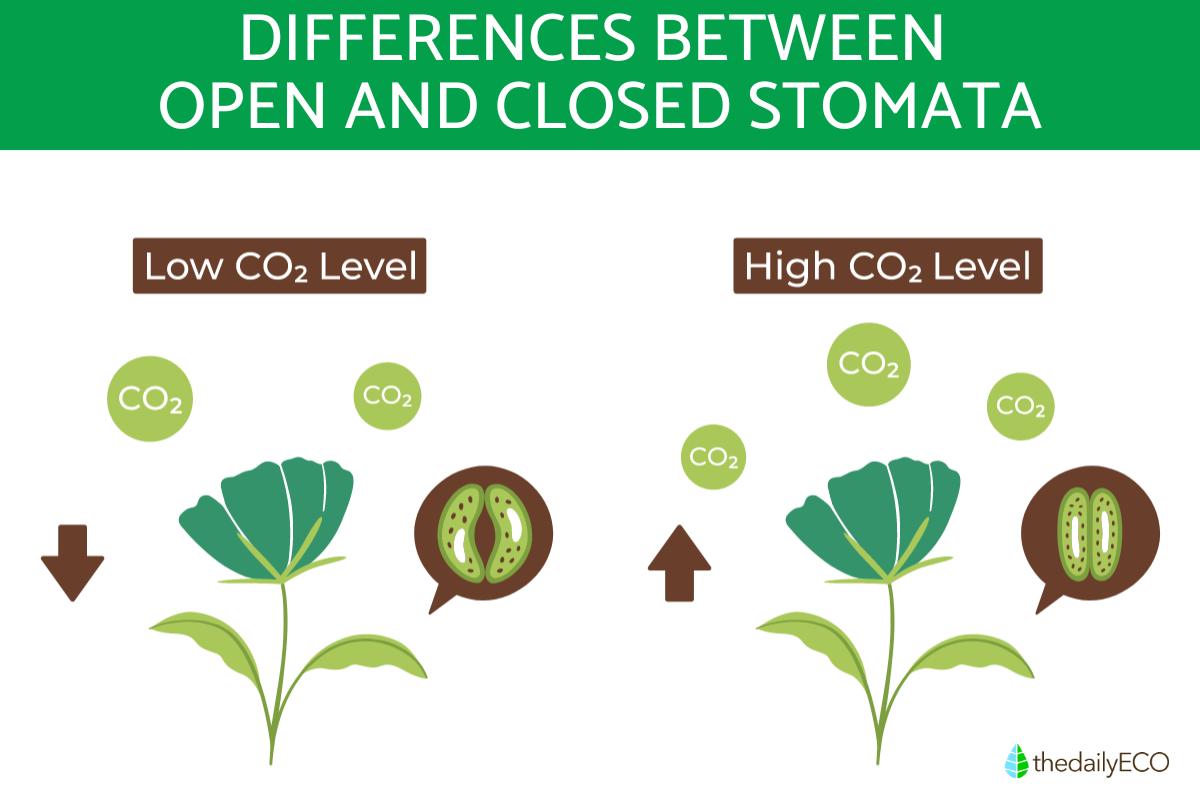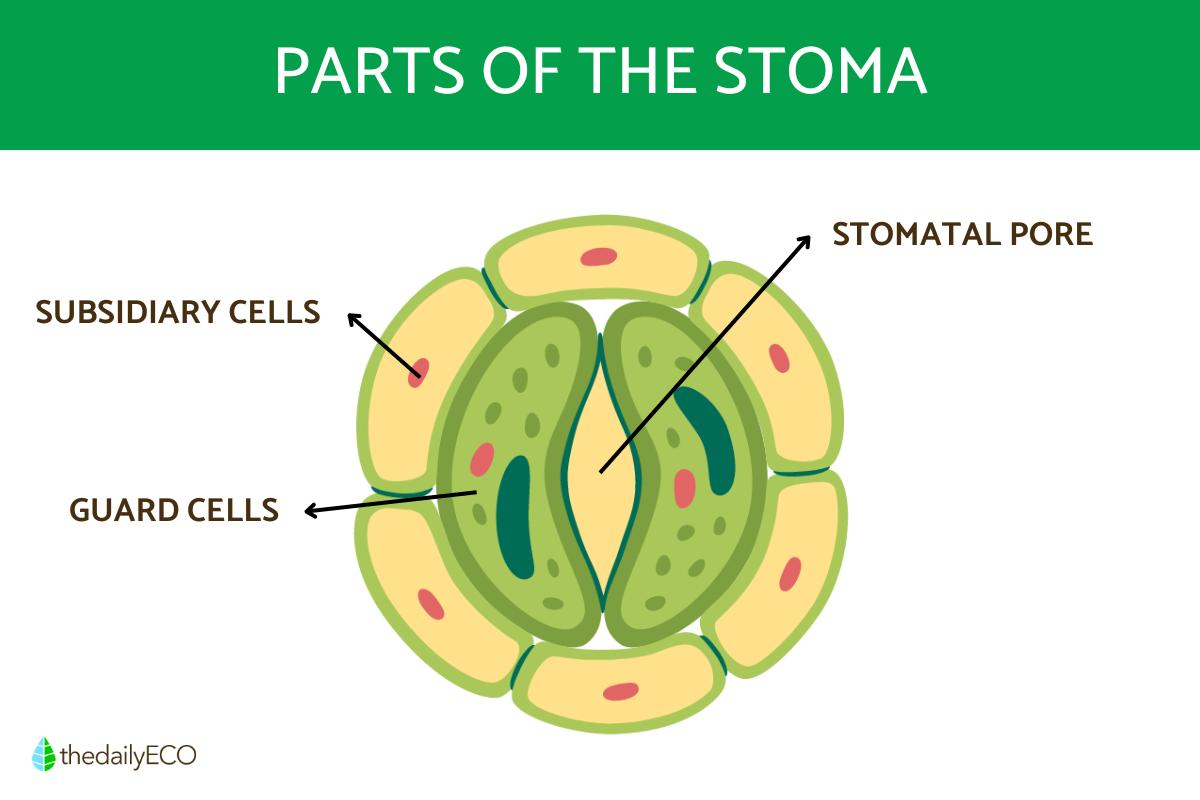What Are the Main Types of Stomata?


Stomata are tiny, but vital structures found on the surfaces of plant leaves and stems, playing a crucial role in the processes of gas exchange and transpiration. These microscopic pores allow plants to absorb carbon dioxide for photosynthesis while releasing oxygen and water vapor. However, not all stomata are created equal; they come in various types that reflect their adaptations to different environmental conditions and plant species.
In this article, we will delve into the various types of stomata, exploring their structural differences and functional roles.
What are stomata and what are they used for?
Stomata are small pores or adjustable openings found in the epidermal tissue of plants and are surrounded by specialized cells known as guard cells. These guard cells regulate the opening and closing of the stomata.
The ostiole is the opening that connects to the substomatal chamber, where gas exchange occurs. Additionally, each guard cell is flanked by one or two modified epidermal cells that assist in the stomatal opening and closing process.
The primary function of stomata is to facilitate gas exchange, which is crucial for effective photosynthesis and respiration. Stomata open to allow carbon dioxide to enter the plant for photosynthesis. This process produces oxygen, which is then released into the atmosphere.
Another important function of stomata is their role in transpiration. This process allows plants to eliminate excess water. This helps to cool the plant and transport water and nutrients throughout its tissues. The movement of stomata, coordinated by the guard cells, is referred to as stomatal movement.
Stomata opening and closing are influenced by several environmental factors. Light plays a significant role, with stomata tending to open in the presence of light and close in darkness. Additionally, temperature can affect stomata function. Extreme temperatures, both hot and cold, may cause stomata to close. Humidity also plays a part, as high humidity can lead to stomata closure to conserve water. Furthermore, carbon dioxide levels in the air can influence stoma behavior. If carbon dioxide levels are high, stomata may close to reduce the amount of carbon dioxide entering the plant.
Different plants have evolved unique stomatal adaptations to suit their specific environments. Desert plants, for example, often have fewer stomata and may open them only at night to minimize water loss in arid conditions. This helps them conserve precious moisture. On the other hand, rainforest plants, which have abundant water and sunlight, typically have more stomata to maximize photosynthesis. These plants can afford to open their stomata more frequently without worrying about excessive water loss.
Don't miss our deeper exploration into the role of stomata in plant health and survival.

What are the parts of the stomatal system?
The stomatal system is a complex structure that plays a vital role in plant gas exchange and water regulation. It consists of several key components:
- Stomatal pore: this is the actual opening on the leaf surface through which gases, such as carbon dioxide and oxygen, enter and exit the plant. It's a microscopic aperture that can vary in size depending on the needs of the plant.
- Guard cells: these specialized cells surround the stomatal pore and control its opening and closing. They have a unique kidney-shaped structure that allows them to change their shape and size, regulating the size of the pore. Guard cells contain chloroplasts, which are essential for photosynthesis.
- Subsidiary cells: these are larger cells that flank the guard cells and provide structural support and protection. They also help to regulate the microenvironment around the stomatal pore, influencing the diffusion of gases.
- Substomatal chamber: this is a cavity located beneath the stomatal pore that connects to the internal tissues of the leaf. It acts as a buffer zone, allowing for the diffusion of gases between the outside atmosphere and the plant's internal environment.
The stomatal system works in conjunction with other plant structures, such as the mesophyll cells, to facilitate efficient gas exchange and maintain the plant's water balance.
If you’re fascinated by how stomata work, dive deeper into the intricate structure of leaves and their functions in our next article.

Types of stomata
There are two major categories for classifying the stomata of plants: based on their surrounding cells and based on their origin and development. Let us take a closer look at each one:
Types of stomata according to their surrounding cells
- Anisocytic (or Cruciferous): this type of stoma has three surrounding cells—two of equal size and one smaller. This term is often used interchangeably with "Cruciferous" and is primarily found in the Brassicaceae family, which includes many plants formerly classified under Cruciferae.
- Anomocytic (or Ranunculaceous): stomata characterized by several surrounding cells of varying sizes. This term is also used interchangeably and is typical of dicotyledonous plants. You can find this type in families such as Amaryllidaceae and Dioscoreaceae.
- Cyclocytic: stomata that feature several subsidiary cells arranged in a circular pattern around the guard cells.
- Dioecious (or Diacitic): these stomata consist of two adjacent cells oriented perpendicular to the guard cells. This type is common in the Acanthaceae and Caryophyllaceae families.
- Heliocytic: stomata with several subsidiary cells surrounding the guard cells. This term is sometimes considered a variation of either anomocytic or cyclocytic, depending on the specific arrangement of the surrounding cells.
- Paracytic (or Rubiaceous): stomata where two adjacent cells are arranged parallel to the guard cells.
- Tetracytic: stomata formed by four subsidiary cells, often found in various monocotyledonous families.
Types of stomata according to their origin and development
- Mesogenous: in this type of stomata, both the guard cells and the surrounding cells arise from the same mother cell after completing three rounds of cell division.
- Mesoperigenous: this type originates from a mother cell that gives rise to multiple guard cells along with a single surrounding cell. The remaining surrounding cells are formed from other protodermal cells. This term may not be widely recognized, so it’s important to provide context when using it.
- Perigenous: in this case, the mother cell produces only the guard cells, while the surrounding cells are derived from other cells in the protodermis.
Interested in how plants convert sunlight into energy? Dive deeper into the science of photosynthesis in our next article.
If you want to read similar articles to What Are the Main Types of Stomata?, we recommend you visit our Biology category.







